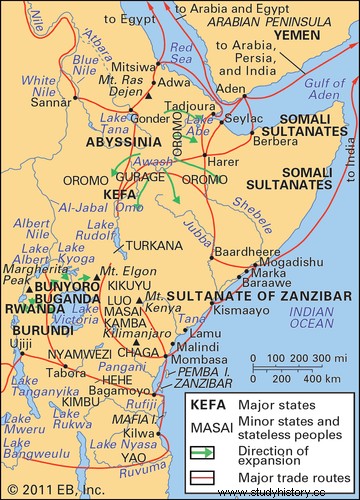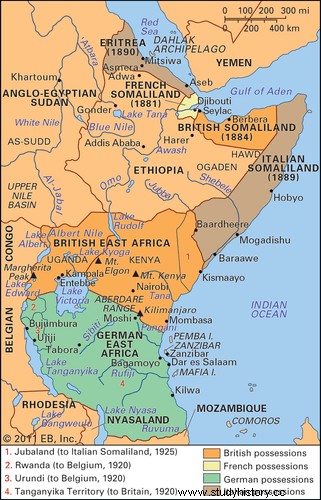Kingdom of Burundi , traditional East African state, now Republic of Burundi . Sometime before the 17th century, the Tutsi , a pastoral people, their dominance over the those living in the region Hutu Farmers. During his reign ( approx. 1675–1705) extended the Mwami (King) Ntare Rushatsi (Ntare I) his dominion from the central Nkoma area over the neighboring regions of Bututsi, Kilimiro and Buyenzi. A later king, Ntare II Rugaamba ( approx. 1795–1852), conquered more territories and occupied parts of what is now southern Rwanda and West Tanzania . The organization of the kingdom was decentralized:local princes enjoyed semi-autonomy, and conflicts over the succession of kingship were frequent; These became serious in the late 19th century and by 1900 Ntare Rugaamba's successor, Mwezi Kisabo, controlled only half of the kingdom.

 Britannica Quiz Destination Africa:Fact or Fiction? Is Africa's northernmost point further north than Europe's southernmost point? See if your geographical knowledge points north or south on this journey through Africa.
Britannica Quiz Destination Africa:Fact or Fiction? Is Africa's northernmost point further north than Europe's southernmost point? See if your geographical knowledge points north or south on this journey through Africa. Starting in 1890, Burundi became part of the Deutsch-Ostafrikas claims but never occupied. It was in World War I adopted by the Belgians from neighboring Congo and after the war with Rwanda on Belgium as mandate League of Nations (later the Trust Domain the United Nations ) by Rwanda-Urundi given . After the World War II Burundians pushed for independence, which was achieved in 1962.

